Last September, the Hegyvidék Local Council issued a tender to commemorate the local civilian and military victims of World War II. The work of art will be erected in the 12th District on the corner of Csaba Street and Maros Street, in the area next to the Városmajori Church. Thirty-three designs were submitted for the deadline.
The district's website notes that the call for proposals stipulated that the application should implement an abstraction that symbolises those affected by the conflict in a broader sense, be inclusive, a design in which everyone can find themselves, regardless of their religion, nationality or affiliations. The competition was a national, public, one-round tender for which entries were submitted under pseudonyms. Applicants were also asked to propose solutions to placing the names of the victims of the 1956 revolution on the work.
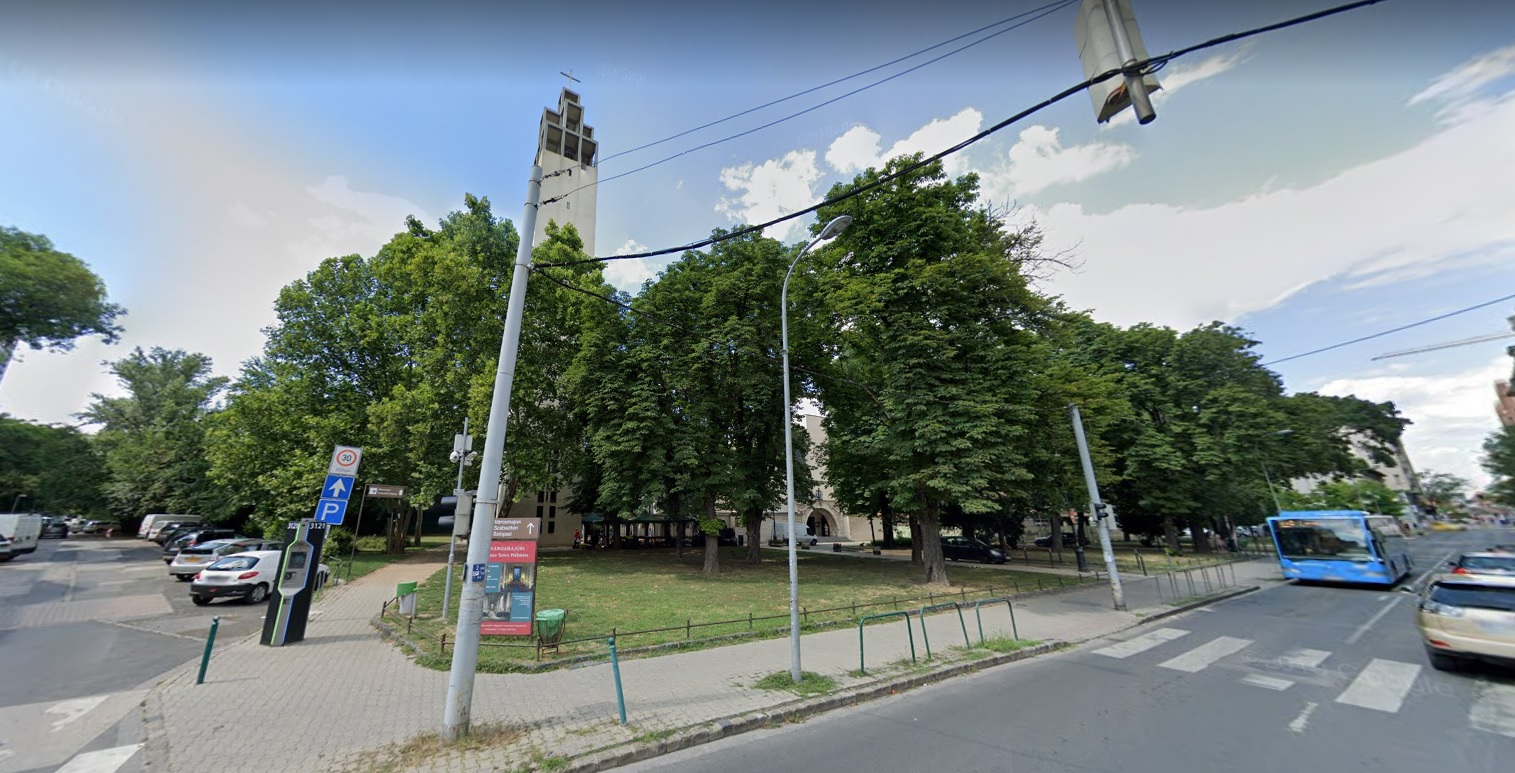
Plans state that the new memorial will be erected here, next to Városmajor Church, on the corner of Maros and Csaba Streets (Photo: Google Streetview)
The tender attracted great interest, more than a third of the submitted applications brought new approaches to the topic.
After reviewing all applications, the jury selected 8 of the 33 entries. The eight outstanding projects included the works of the following sculptors: Péter Czér (Budapest), Zénó Kelemen (Budapest), Sándor Pál Lakatos (Kecskemét), András Mohácsi (Budapest), Benedek Nagy (Monor), Péter Raab Párkányi (Budaörs), László Rádóczy (Pécs) and Géza Stremeny (Csobánka).
The judges voted on the winning entry from the eight selected ideas: András Mohácsi's design was chosen. The work in András Mohácsi's "Memorial Stone" design is composed of two granite blocks. Starting from the ground, a gap grows between the two blocks. A negative image is born in the empty space.
The design of the monument articulates the symbolism of loss and hope. The work depicts the breaking of unity and the pain of how the loss of life lives on in us.
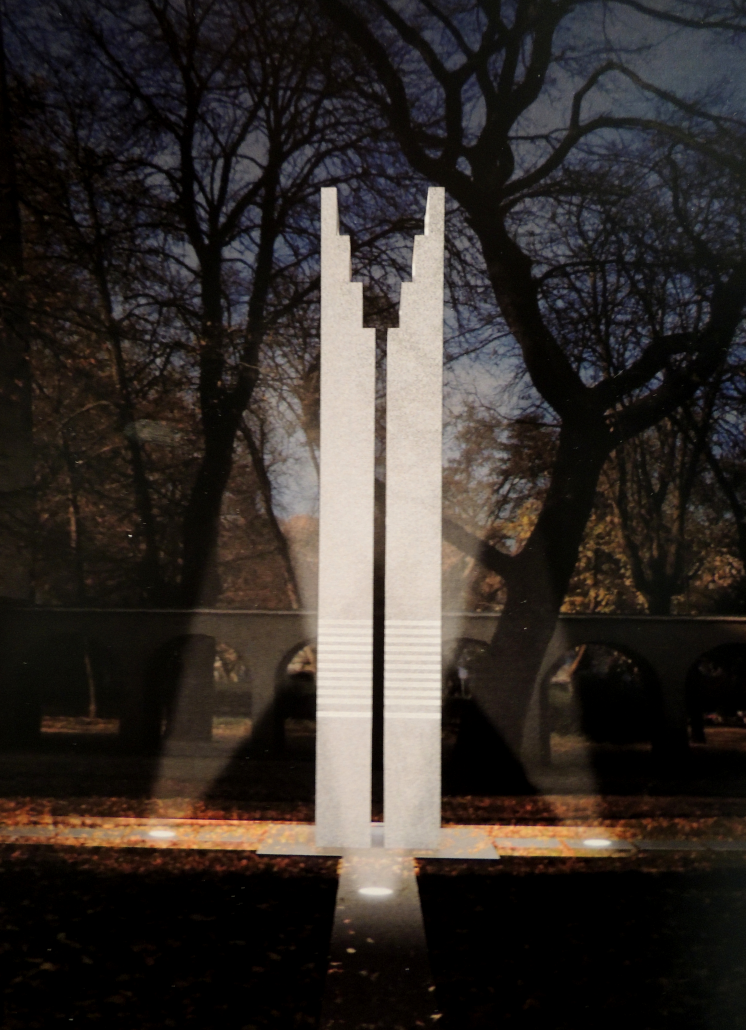
The design selected by the judges, called "Memorial Stone" (Photo: hegyvidek.hu)
According to the jury, the design of the monument retains the upward-sloping character of a church bell tower, but a symbolic concrete belfry appears in a negative form. Names will be displayed on the memorial on stainless steel plaques embedded into the sides of the stones.
The following lines about the other seven entries were taken from the judges' evaluation.
The “Dark Stones” design by Péter Czér and Virág Nagy evokes the calming, meditative atmosphere of an old cemetery. The narrow walking paths weave through 14 dark granite slabs lying in no apparent order. The heavy, dark grey stone slabs face the church's main facade and are arranged by a central symbolic force.
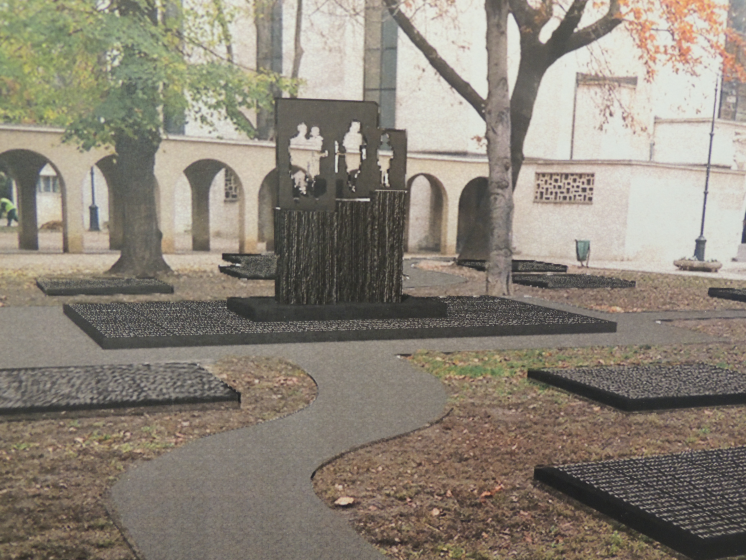
"Dark stones" (Photo: hegyvidek.hu)
The central composition is dramatic, showing silhouettes of figures carved out of steel plate standing on stone blocks. The figures, or more precisely their absence, depict different groups of people (families, couples, a little boy) who are in a hurry, running away, and yet still clinging to each other.
Zénó Kelemen's entry entitled "Field of Hope" is organized around the key concepts of identity, memory and heritage. The road plan of the 12th District provided the base for the design referring to the area that connects the victims. At its centre is a bronze gate that opens and expresses the hope of a new life. On one side of the gate are the names of the military victims lined in a tight geometric formation. On the other side of the gate, the civilian victims are listed in organic shapes.
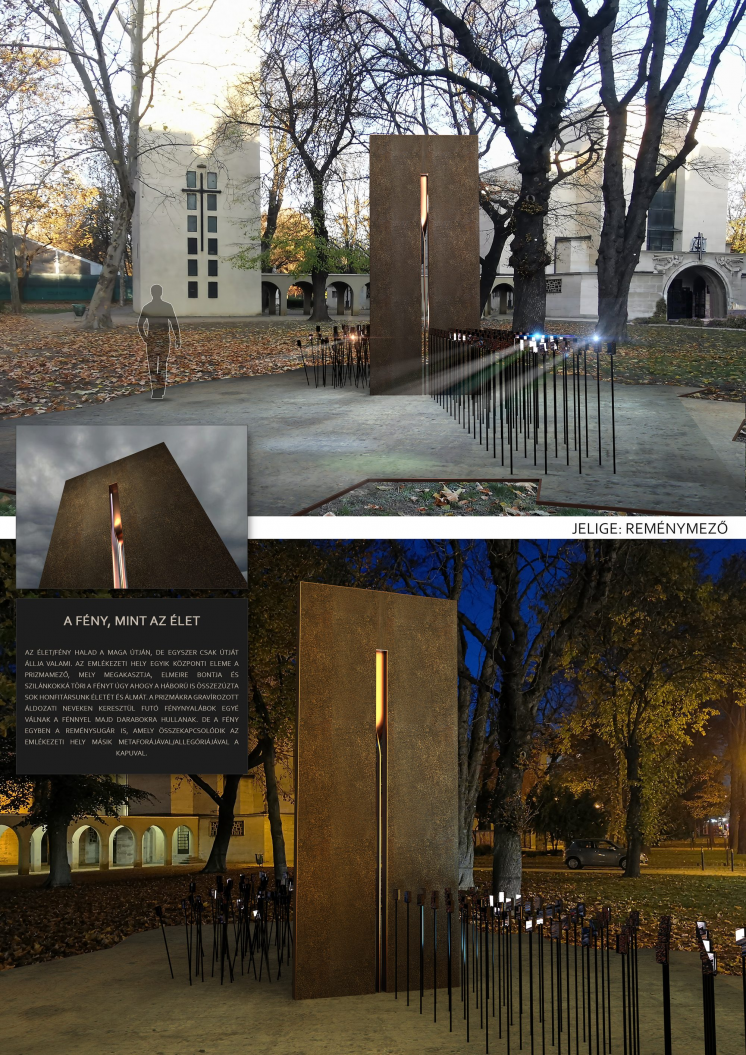
"Field of Hope" (Photo: hegyvidek.hu)
Another central element of the design in the field of prisms. The names of the victims are engraved on prisms, with a name on each side of each prism. Due to the properties of the prisms, the different sides reflect each other. Thus the names merge into each other, alluding to the interconnected nature of their destinies.
In the design "...write on the sky if all else is broken!", Pál Sándor Lakatos realised the idea of soldiers fighting on the front creating memorabilia from the shells fired from cannons remembering those they left behind. In some places, names and dates were hammered into these objects. The sculpture is the massive bronze object on which figures reflecting on war and bombed cities appear.
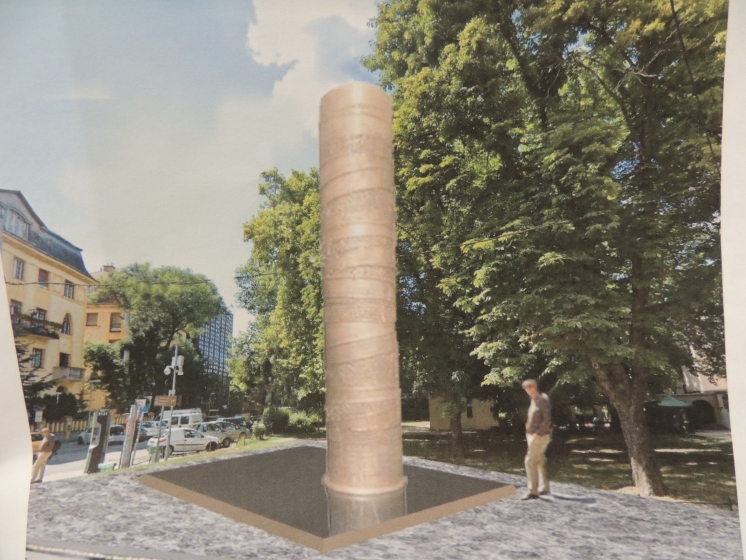
"...Write on the sky, is all else is broken!" (Photo: hegyvidek.hu)
Benedict Nagy submitted "Mother Earth", which seeks to express universal mourning. The mother of all life protects and mourns her meaninglessly lost children and preserves their loss in her soul. The pedestal of the statue is a cube of hard basalt, a solidified body of hot lava from the core of the earth. Loss appears in negative figures carved into the female shape of the stone figure.
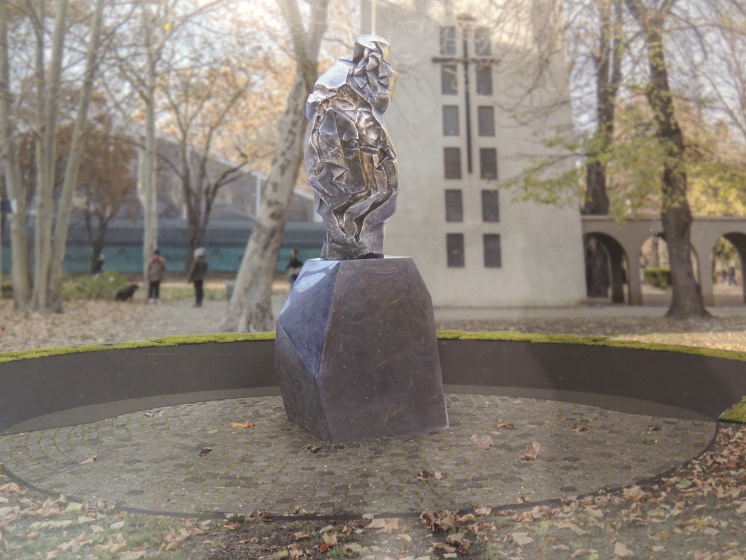
“Mother Earth” (Photo: hegyvidek.hu)
The project submitted by Péter Raab Párkányi under the pseudonym “Memory” brings the shape of the church tower in Városmajor into the monument, on which various figures can be seen. The church tower is formally suitable for displaying the names of victims, as well as for shaping sculptures and human figures. The work pays its respects to different destinies by showcasing different figures on the shape. The tower is made of iron, while the figures of bronze.
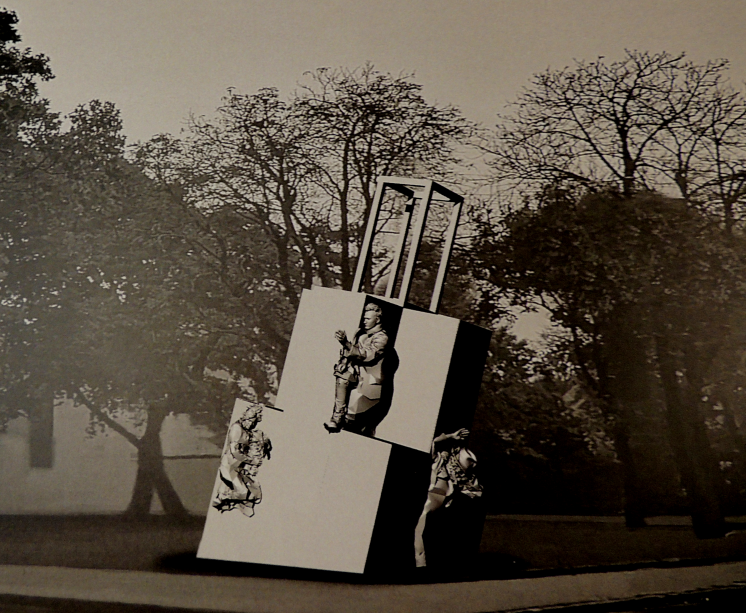
"Memory" (Photo: hegyvidek.hu)
László Rádóczy submitted the idea "Postumus". The statue, which stands at the memorial site's physical and spiritual centre, was designed for a previously planned memorial site with a similar theme. The sculpture uses a characteristic, magnified fist clenched in pain and grief, a universal, powerful, and clear symbol of suffering to display shared memory. The dynamism and asymmetrical structure of the sculpture refer to dramatic events.
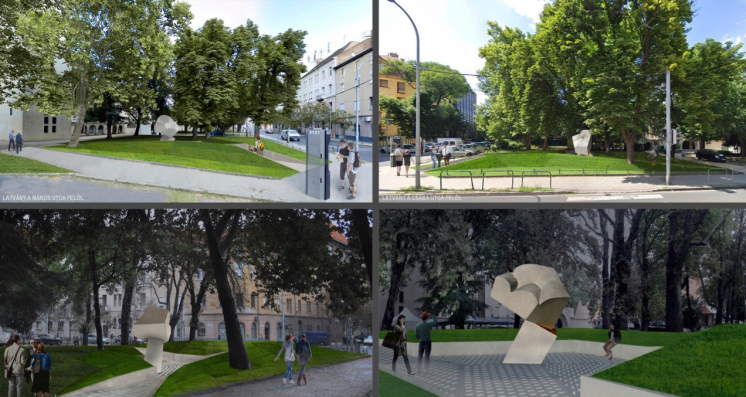
"Postumus" (Photo: hegyvidek.hu)
The statue is placed in a crease in the Earth. The statue stands in the centre of this space as a centre of gravity, and the names of the victims are embedded in the walkway and create a path of light to provide the illumination of the work.
"Bronze thorn" by Géza Stremeny is a dark bronze cone, which grows increasingly shiny and polished towards the top. The names are located at an accessible height on a recessed surface. Similarly to a tree trunk that has lost its bark, this section is lighter than the others.

„Bronze thorn” (Photo: hegyvidek.hu)
The circular shape inspires visitors to walk around and read the list of names. The pointed shape rises towards the sky and is a universal ancient tradition in creating constructed signs (e.g. church towers), but it can also be seen as a huge spearhead or thorn.
Source: hegyvidek.hu | Abridged in translation
Cover photo: A World War II memorial is planned for the 12th District (Photo: hegyvidek.hu)

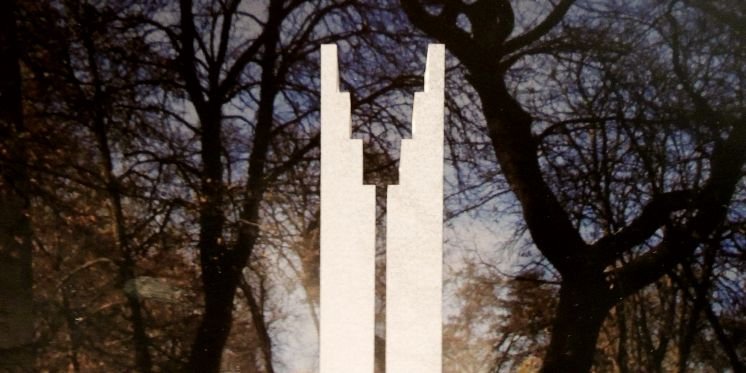




































Hozzászólások
Log in or register to comment!
Login Registration